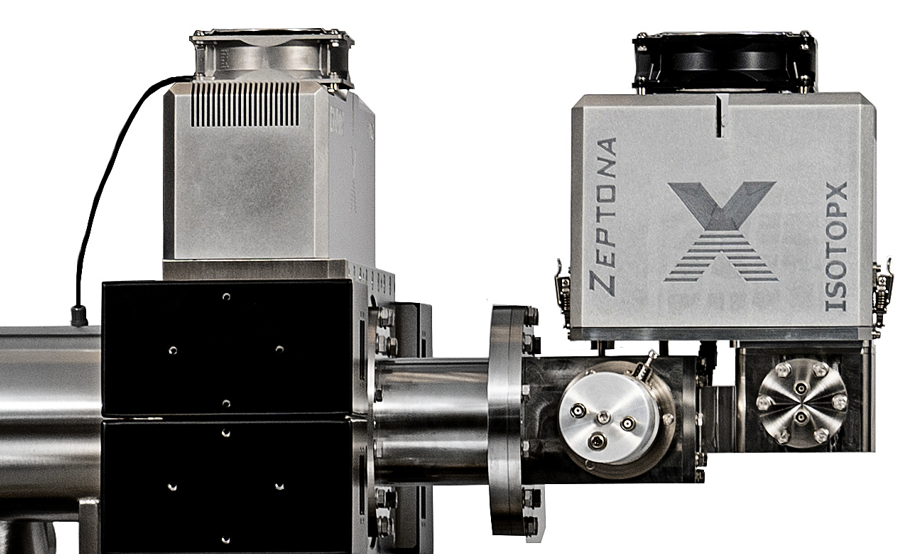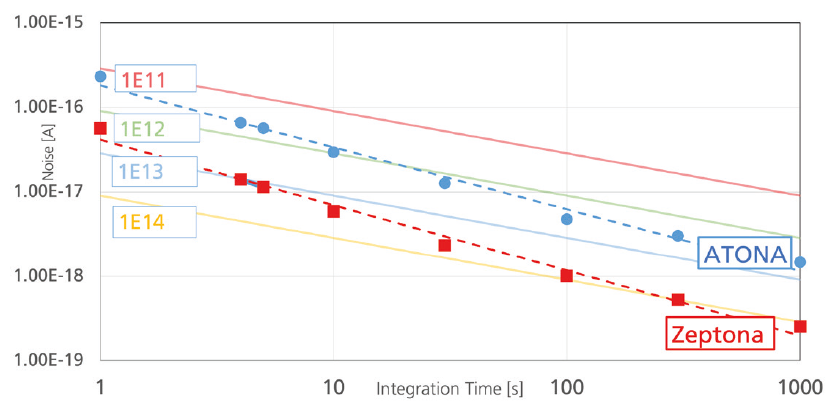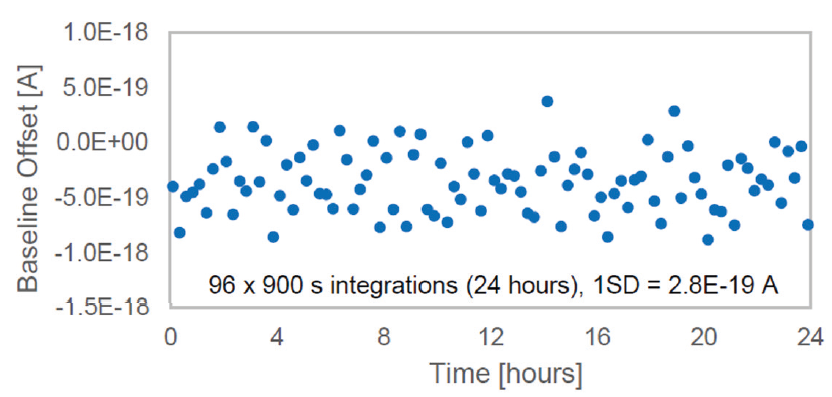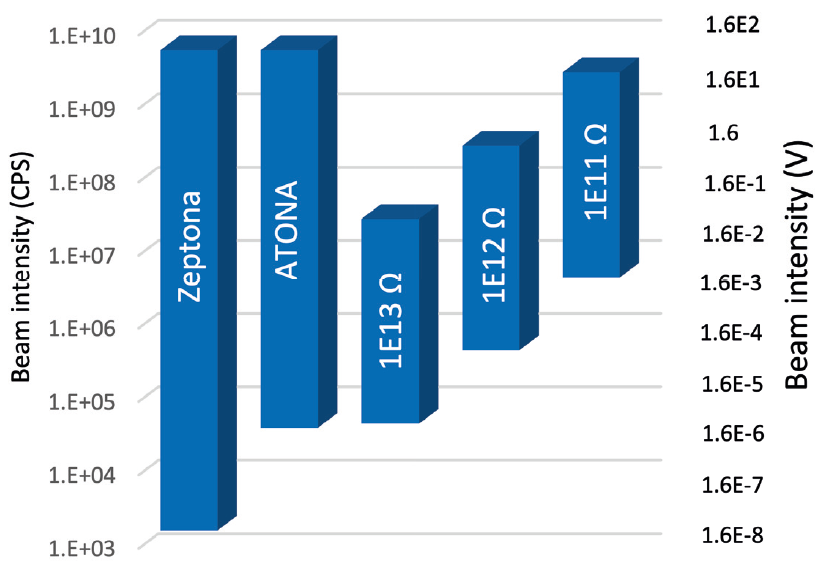You may already know about ATONA® technology. Zeptona takes it one step further.
Resistor-based Faraday detectors have a limited overlap of dynamic range with ion counting detectors, and even other Faradays when using different feedback resistors. If the beam intensity is too low then the Faraday noise reduces your precision. It it’s too high then ion counter performance such as linearity and beam-induced gain effects will compromise your data. In the real world, you have to make a choice between 1E11 Ω and 1E13 Ω amplifiers, depending on your sample type – but it’s always a compromise. And for the higher ohmic resistors, gain calibration and Tau decay can be a major headache too.
The answer is Zeptona, it’s our highest performance ATONA® system. It’s a single-channel Faraday detector that offers all of the performance of ATONA®, but with lower, more stable baseline noise, and the ability to measure even smaller beams than ATONA® – down to a thousand counts per second. Yet Zeptona retains all of the benefits offered by ATONA®, including extremely rapid Tau decay and almost no gain drift with time.
Zeptona is based on ATONA technology, it’s a revolution in signal amplification. It suffers from none of the usability issues that plague 1e12 Ω and 1e13 Ω amplifiers. There are no gain calibration problems, no Tau decay issues, and the baseline noise approaches that of an ion counter. Zeptona shows a linear response from hundreds of counts up to 100 volts. There’s no compromise, and no decisions to make about which resistor type to use.

Noise
ATONA® and Zeptona work differently to resistor-based amplifiers. The noise performance improves with integration times, and with a typical 10 second integration time, the Zeptona outperforms even a 1e13 Ω resistor-based amplifier (see below). And that’s across the whole dynamic range too.

Relative noise levels for Phoenix ATONA® and Zeptona versus resistor-based Faraday amplifiers
But what about baseline offset stability? The baseline offset over 24 hours, shown in the figure below is 2.8E-19 A or 280 zA. Put another way, it’s 1 cps over an entire day!

Dynamic Range
Higher resistance amplifier systems are hugely compromised, particularly in terms of dynamic range. But ATONA® and Zeptona are different, Zeptona can be used for ion beam sizes from a thousand cps up to 100 V or more (see below). In fact the limit of detection is on the order of 10 CPS. It’s linear across the whole range too. So if you have high and low abundance isotopes, or unknown / variable sample sizes, Zeptona is the perfect solution.

Download Brochure
Download the Zeptona overview brochure: Zeptona overview brochure